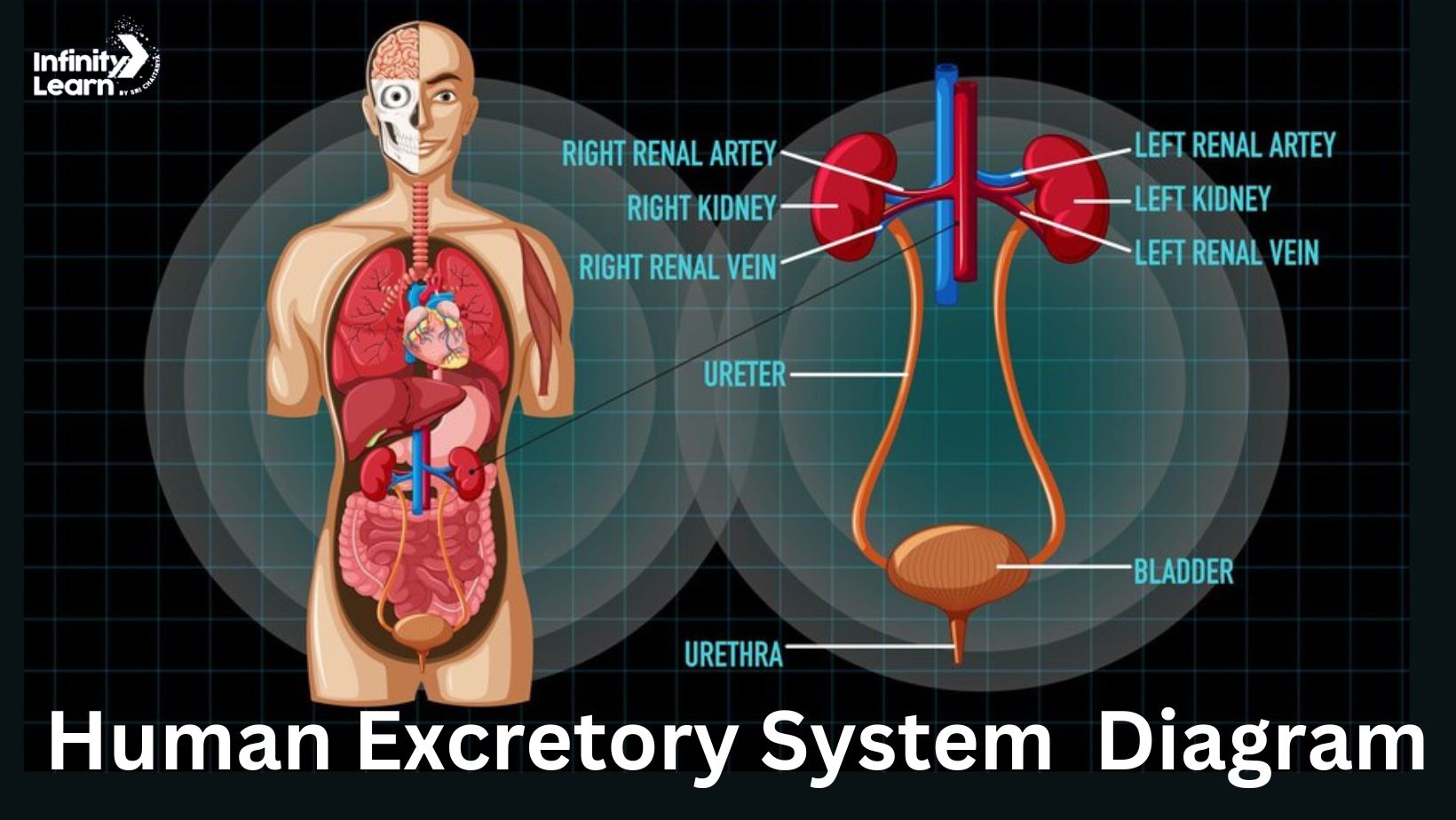Table of Contents
People eat food every day to get nutrients. After the body takes what it needs from the food, it gets rid of the stuff it doesn’t need. This process involves organs like the kidneys, urethra, ureters, and bladder. In this article, we’ll explain the human excretory system, what it does, and what parts it has, along with a detailed picture.
Also Check: Autoclave Diagram
What is the Human Excretory System?
The Human Excretory System consists of special organs in the body responsible for getting rid of waste, like nitrogenous substances, and other unwanted materials. These organs include:
- Urethra
- Urinary Bladder
- Pair of Kidneys
- Pair of Ureters
Human Excretory System Diagram

Functions of Various Organs
Ureter: The ureters are thin muscular tubes that connect the kidneys to the urinary bladder, transporting urine.
Kidneys: The kidneys are bean-shaped organs located on either side of the spine. They have several parts, including the capsule, Henle’s loop, and nephrons. Their main job is to remove waste like acids used in digestion and extra fluids from the body.
Urethra: The urethra is a tube that carries urine from the bladder to the outside of the body. In males, it also transports sperm. Sphincter muscles at the tube openings control the flow.
Urinary Bladder: The urinary bladder is a muscular sac that stores urine. It empties during urination.
Human Excretory Diagram

Functionality of Human Excretory System
As mentioned earlier, the human excretory system has several vital functions. Let’s go over them briefly:
Urine Formation: Urine is made in nephrons and then travels from the kidneys to the urinary bladder through tubes called ureters.
Tubular Reabsorption: During this process, the body absorbs ions and molecules like amino acids, water, glucose, and sodium ions through both active and passive methods.
Secretion: To maintain fluid balance in the body, excess amounts of fluids such as hydrogen ions, ammonia, and potassium ions are expelled.
Glomerular Filtration: This process involves filtering out excess fluid and waste from the blood, storing them in the kidneys’ urine collection tubes.
Human Excretory System Diagram FAQs
What is the main structure of the excretory system?
The excretory system mainly consists of the kidneys, ureters, bladder, and urethra.
Which organ is present in the excretory system?
The kidneys are the primary organ in the excretory system.
How does the human excretory system work?
The kidneys filter waste from the blood, which is then removed as urine through the bladder and urethra.
How many excretory system do we have?
Humans have one excretory system.
What is the main organ found in the excretory system?
The main organ in the excretory system is the kidneys.
Why is the excretory system so important?
The excretory system removes waste and toxins from the body, maintaining proper balance and functioning.
What forms urine in the excretory system?
Urine is formed in the kidneys through the filtration of waste from the blood.
Which organ collects the wastes?
The bladder collects waste in the form of urine until it is expelled from the body.
Why is the excretory system so important?
The excretory system is vital for removing harmful substances and maintaining the body's internal balance and health.









